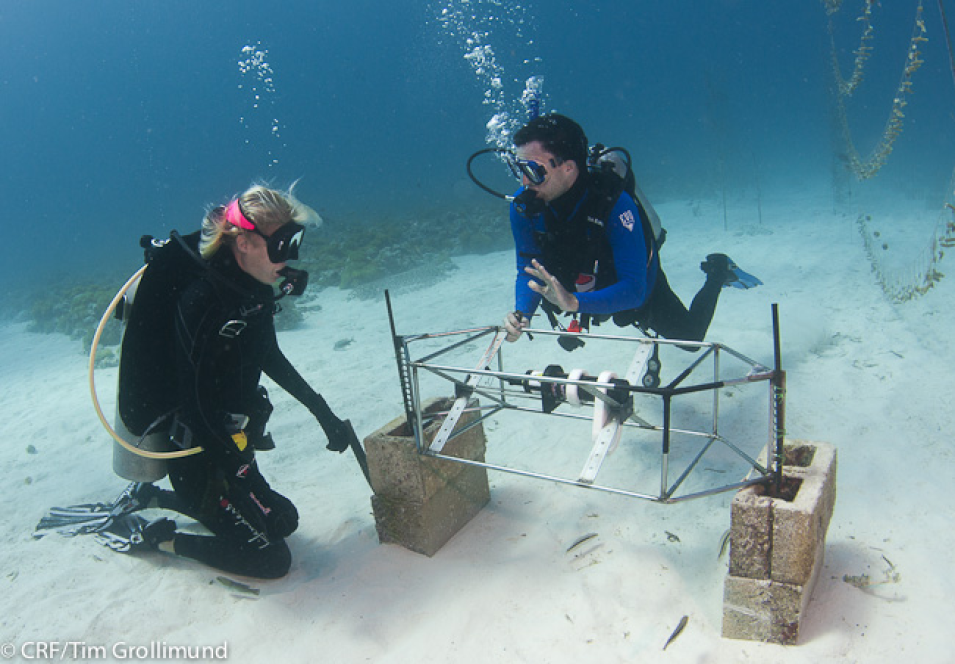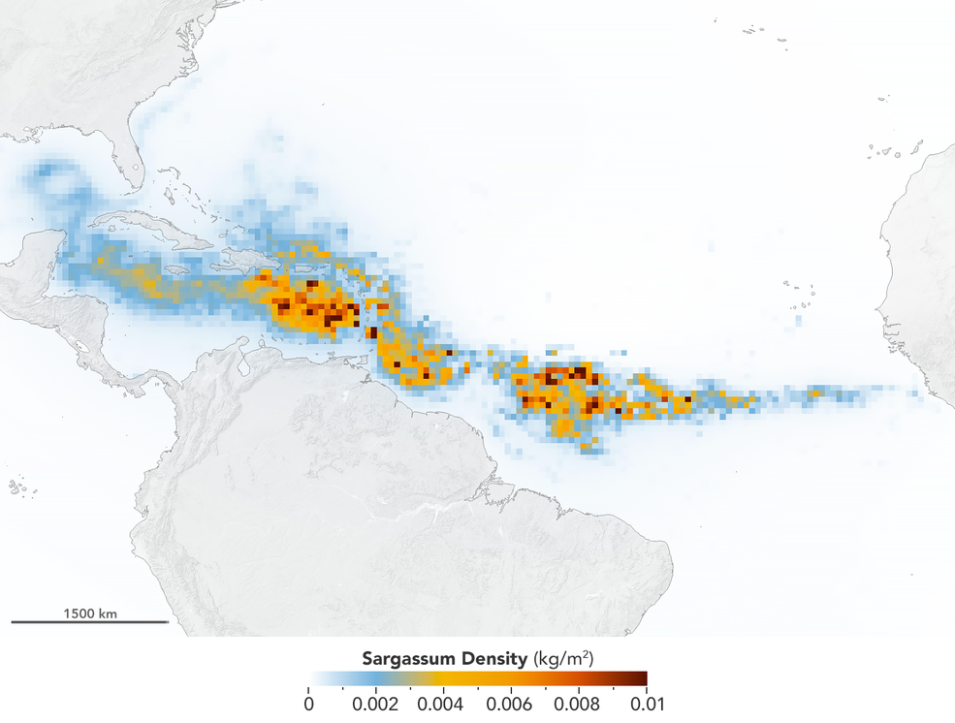Since 2011, a Great Atlantic Sargassum Belt (GASB) has been observed in satellite imagery. These recurring huge blooms of Sargassum cover an area that can stretch almost 9,000 km (almost 5,600 miles). Led by Dr. Mengqiu Wang at the University of South Florida (USF), Barnes has been heavily involved in a team working to predict the movement of the GASB and its potential to impact shorelines.
An important resource in this work is the almost 20-year record of daily global imagery acquired by the Moderate Resolution Imaging Spectroradiometer (MODIS) instrument aboard NASA’s Aqua satellite (launched in 2002). The daily MODIS imagery enabled the team to not only track the movement of the GASB, but also its origins. Combining MODIS imagery with sea surface temperature (SST) data, the team found that recent bloom events show connections to nutrient enrichment and climatic variations. Remotely sensed data also enabled the team to determine that one source of nutrient enrichment in the central west Atlantic Ocean was increased deforestation and fertilizer use in Brazil. These activities have increased the amount of nitrogen in the water column, stimulating Sargassum blooms.
While much of Barnes’ work utilizes Aqua/MODIS data and imagery, this instrument has been in orbit since 2002 and already has far exceeded its predicted life span. Fortunately, MODIS is not the only orbiting sensor collecting ocean color data. The Visible Infrared Imaging Radiometer Suite (VIIRS) aboard the joint NASA/NOAA Suomi National Polar-orbiting Partnership (Suomi NPP; launched in 2011) and NOAA-20 (launched in 2017) satellites, the Ocean and Land Colour Instrument (OLCI) aboard the European Space Agency (ESA) Sentinel-3 A and B satellites (launched in 2016 and 2018, respectively), and NASA’s Sea-viewing Wide Field-of-view Sensor (SeaWiFS) aboard the SeaStar satellite (operational 1997 to 2010) all provide(d) valuable ocean color data.
Barnes is part of the team developing applications for the next generation of ocean color sensors: the Ocean Color Instrument (OCI). The OCI is the primary sensor aboard NASA’s Plankton, Aerosol, Cloud, ocean Ecosystem (PACE) satellite, which is scheduled for launch in 2022. The OCI will be the most advanced ocean color sensor ever launched by NASA. What sets the OCI apart from other ocean color sensors is that it will detect radiation along a very broad spectrum of wavelengths at 5 nanometer (nm) intervals, including the ultraviolet (UV) (350-400 nm), visible (400-700 nm), and near infrared (700-885 nm), as well as several shortwave infrared bands. While heritage sensors are multi-spectral (collecting measurements at a few discrete wavelengths), OCI is hyperspectral, and collects continuous measurements across the visible light spectrum. As PACE Project Scientist Dr. Jeremy Werdell observes, heritage sensors are like a crayon box with eight colors; OCI is the 64-crayon box that we all wanted as kids. The result will be a sensor providing an unprecedented view of the ocean without the sensor wavelength blind spots of previous satellite-borne sensors.
Thanks to the next generation of ocean color sensors, we are on the verge of a new era of investigation in exploring ocean science. Through the work of scientists like Barnes, these data and discoveries soon will be part of NASA’s ever-growing EOSDIS collection.
Representative data products used; available through NASA’s OB.DAAC:
Read about the research:
Barnes, B.B., Hu, C., Bailey, S.W. & Franz, B.A. (2020). Sensitivity of Satellite Ocean Color Data to System Vicarious Calibration of the Long Near Infrared Band. IEEE Transactions on Geoscience and Remote Sensing. doi:10.1109/tgrs.2020.3000475
Gray, E. (2019). NASA Satellites Find Biggest Seaweed Bloom in the World. NASA’s Earth Science News Team. Published July 8, 2019. Available online (link).
Wang, M., Hu, C., Barnes, B.B., Mitchum, G. & Lapointe, B. (2019). The Great Atlantic Sargassum Belt. Science, 365(6448): 83-87. doi:10.1126/science.aaw7912
Cunning, R., Silverstein, R.N., Barnes, B.B. & Baker, A.C. (2019). Extensive coral mortality and critical habitat loss following dredging associated with remotely-sensed sediment plumes. Marine Pollution Bulletin, 145: 185-199. doi:10.1016/j.marpolbul.2019.05.027
Explore more Data User Profiles


